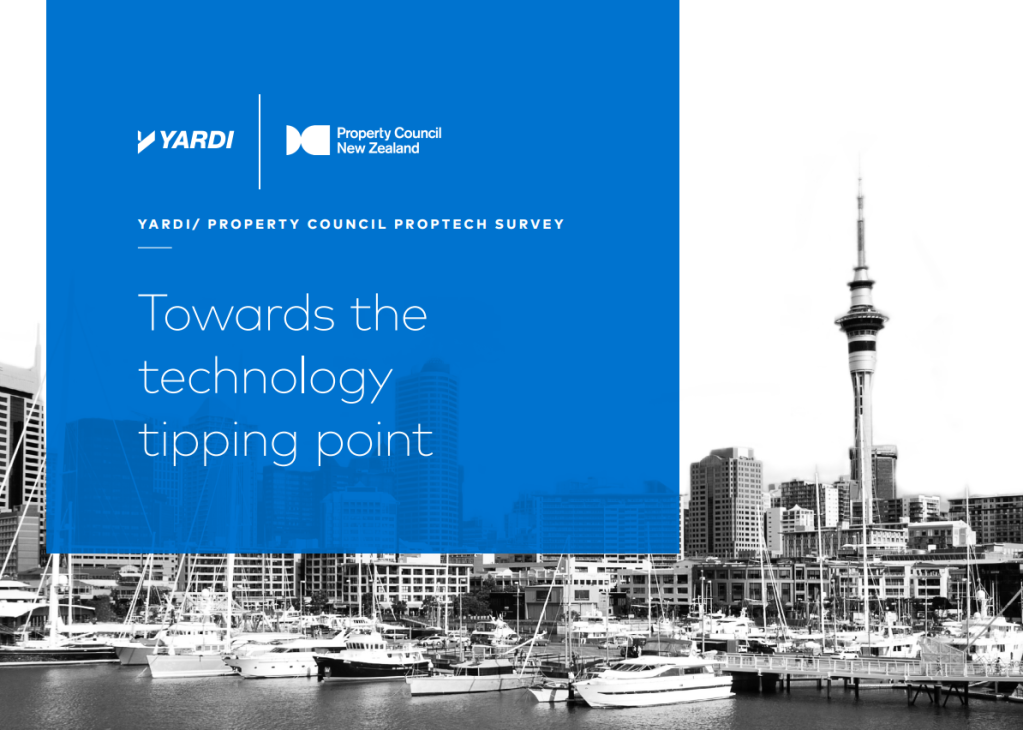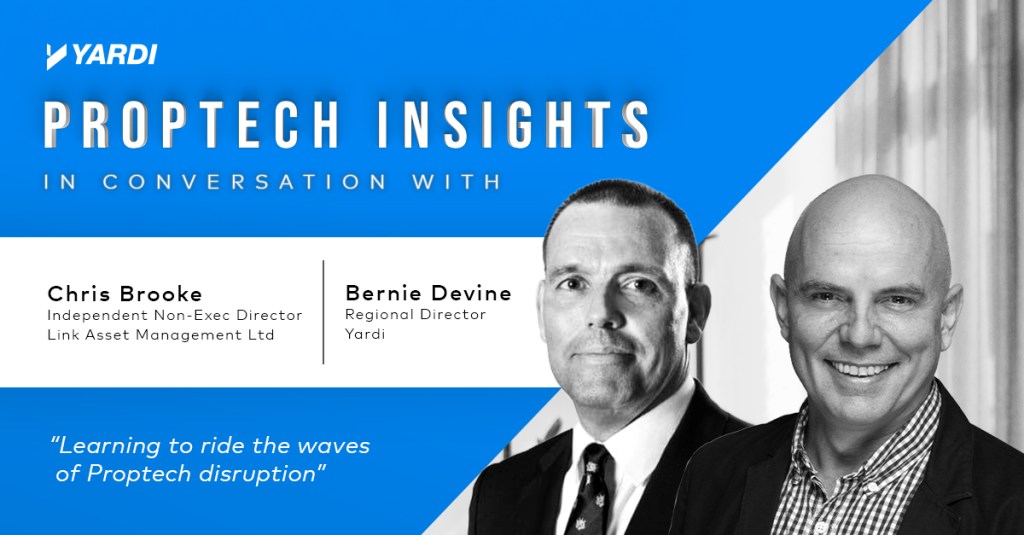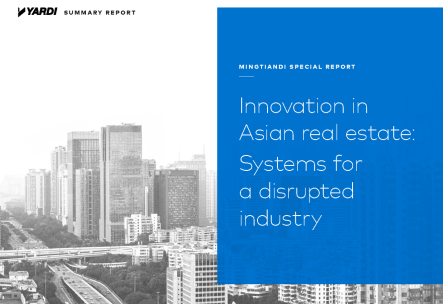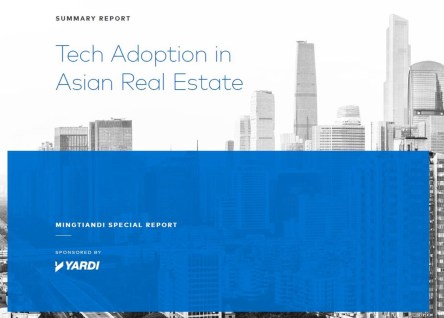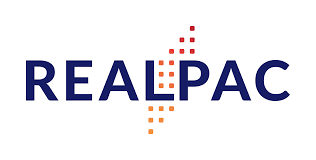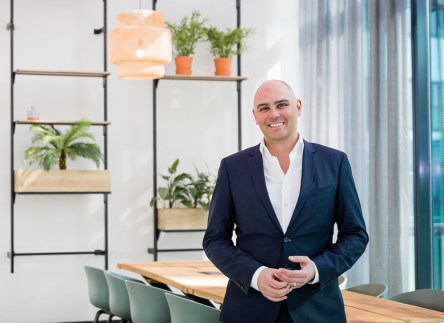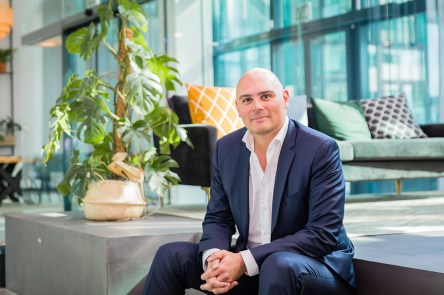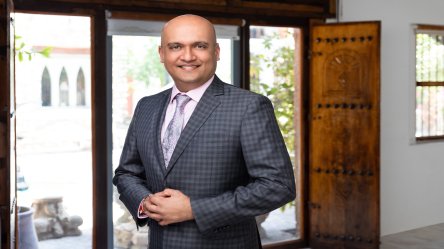Contraction in the proptech universe won’t be driven just by competition, consolidation or economic challenges, but also by compliance. That’s the top takeaway from a recent webinar hosted by Yardi’s Asia Pacific team. Bernie Devine, Yardi’s Senior Regional Director for Asia Pacific, sat down with Kevin Yardi, Vice President of Yardi, for the final installment of Proptech Insights for 2022. Kevin Yardi interfaces with some of the world’s largest real estate companies and has observed a shift in the proptech conversation as 2023 begins. The latest Metaprop Global PropTech Confidence Index, which has been a barometer of health for the burgeoning proptech industry since 2016, recorded its lowest investor confidence score to date. Confidence plummeted to 5.8 out of 10, down from its all time high of 9.3 just six months prior. While a “handful” of proptech companies are receiving “big cheques” a “long, long tail” is the recipient of far smaller investments, Kevin noted. Expect that long tail get much shorter, Kevin predicted, as the screws of regulation tighten over the next two or three years. Regulation is expected to ramp up across the Asia Pacific. Following a series of high-profile data breaches, the Australian Government is considering tougher financial penalties with fines up to AU$50 million. Japan’s laws governing the protection of data has been strengthened to match the gold standard of data protection regulation, the European Union’s GDPR. And China’s new data privacy legislation influences more than a billion internet users. Bernie suggested these moves signal a future model where consumers “containerise” their personal data and make it available on a “permission-only basis”. Real estate companies will be required to rethink every element of their business process, he warned. Kevin agreed. “You have to understand what data you have, why you are holding it, and how long you are holding it for. Those seem like straightforward questions. But if the data is sitting in all sorts of systems for reasons unknown it can be a challenging thing to start digging through.” Compliance is a “large, growing and challenging topic” for every company in the proptech ecosystem, but especially those operating at a small scale, Kevin added. “It is challenging for a small company to have the apparatus, the technical security teams, the folks who understand compliance and GDPR.” Real estate customers are reassessing their appetite to absorb the risk. Overlay that with the “operational technology data” collected by everything from “light switches and heat sensors” and “it gets pretty complex because your level of security needs to be much higher,” Bernie added. Yardi has been looking after client data for more than 22 years. Supporting more than two billion square meters of assets and US$6 trillion of assets under management, Yardi has a global footprint and products used in 80 countries. Even with a dedicated global compliance team to mitigate risk and enhance confidence, it’s “not always straight forward,” said Kevin. “Some regulatory bodies may be in conflict with each other. It takes vigilance and ongoing coordination.” So, what can we expect in 2023? The pair expect further aggregation to force companies to streamline their business operations and elevate their compliance processes. “Manual processes and Excel are really hard to scale and tend to be more and more error prone as a portfolio goes from 10 properties to 100 to 1,000 to 5,000,” Kevin concluded. Check out the previous episodes of Yardi’s Proptech Insights webinar...
Net Zero Aspirations
A proptech perspective
When it comes to turning net zero aspirations into real world action, the devil is in the detail – and the only way to the detail is with data. This is just one of the key takeaways from the latest episode of Yardi Proptech Insights. If proptech is about solving business problems, then one real estate’s biggest problems is its carbon footprint. Real estate has a responsibility to decarbonise, as around 40% of the world’s emissions come from buildings. Many of the world’s largest real estate companies have set net zero targets; S&P Global puts the figure at 43 percent. More than a fifth of the world’s 2,000 biggest publicly traded firms – all of them corporate occupiers – have also set net zero targets and are scrutinising their real estate footprints. Su Lin Wee, PGIM Real Estate’s Head of Asset Management for Southeast Asia, recently joined host Bernie Devine, senior director, Yardi APAC, to share an investor’s perspective on the power of proptech to transform net zero aspiration into action. PGIM Real Estate, which has around US$7.9 billion of assets under management in six Asia Pacific countries, has tracked and reported annual carbon emissions reductions since 2008. In 2021, PGIM Real Estate set a net zero operations target by 2050, aligned with the Urban Land Institute’s Greenprint Center for Building Performance Net Zero Carbon goal. Setting a target is a laudable demonstration of leadership, Devine noted. But how do real estate companies separate the green from the greenwash? “The devil is in the detail,” Wee observed. Emissions reductions must be found at the “individual asset” level, which is why “asset management is the space to watch.” “Small incremental improvements” will add up to big impact, Wee added. “It will come down to the small multi-family project in Osaka, the logistics property in China. It all adds up. The sum of the parts will form the whole.” Su Lin pointed to one recent PGIM Real Estate project to understand the embodied carbon footprint of an existing asset in Singapore. “We had to estimate what the embodied carbon of the building was from Day One, the energy consumption from Day One, we had to measure the volume of all the materials… the work took a lot of time and required a lot of data.” Timely and reliable data must be at the heart of any net zero target, Bernie added. While some data points are within easy reach, others remain elusive. When it comes to ESG – environment, social and governance – the “E of environment and energy is easily measured and managed,” Devine observed. But measuring broader social and governance factors remain “quite challenging”. “Energy is clearly about money and connects to financial processes,” Devine said. This makes it easier to capture data and automate process. “But connecting S and G to business ROI is much harder. This, in turn, makes it much harder to translate into process, and therefore automate.” The ESG challenge may be enormous. But one proptech idea “doesn’t need to solve every problem in the value chain,” Wee advised. So what are the best proptech solutions to zero in on net zero? In Wee’s experience, proptech solutions that add the most value are those “which can be explained in less than 30 seconds,” Check out the latest episode of Yardi’s Proptech Insights series or register for our next...
Proptech Disruption
Prompting Sleepless Nights
After Jack Fitzgerald stumbled across the term ‘proptech’ he spent a sleepless night burning the midnight oil or more accurately, draining the battery on his phone. The technology that had transformed other sectors of the economy was coming for real estate. Fitzgerald, Hitachi’s Director of Smart Cities and Real Estate Tech, recently sat down with Bernie Devine for the latest illuminating installment of the Yardi Proptech Insights series. Fitzgerald has worn many hats. During his eight years with Lendlease, he oversaw the development of Singapore’s Paya Lebar Quarter, played in the experimental sandpit as Lendlease’s head of innovation for Asia and launched Propell Asia, Singapore’s first proptech accelerator. Late at night, he scoured the internet for information on proptech start-ups. From this he built Disrupt Property, a database on 800 companies that was eventually acquired by Unissu. In 2020, he seized the opportunity to “change the future” with Hitachi and is now working with everything from AI to EVs, driverless trains to robots. Technology has not yet delivered the seismic shifts seen in other sectors – but disruption is ahead, Fitzgerald warned. The baby steps – digitising tasks once managed by spreadsheets – have been taken. Now, we are in the “early teenage awkward years” where buildings are getting smarter, but this is not obvious to the user. “The dream is that the building knows I’m arriving, the lifts are waiting for me, the latte is heating up, and the lights are turning on as I sit at my desk,” Fitzgerald said. But this “frictionless experience” is still some years away. But today’s leading-edge technology is tomorrow’s business-as-usual. As soon as tenants experience smart parking or destination lifts in one building, they expect it in all of them, Fitzgerald said. This consumer demand for...
Innovation Acceleration
New Zealand Proptech Report
New Zealand’s property industry has accelerated its investment in technology in response to Covid-19 and embraced new systems and processes at a faster rate than its Australian counterparts, according to a new report. Despite this, six in 10 respondents to a survey conducted by the Property Council of New Zealand and software company Yardi still depend on spreadsheets to assess the performance of their portfolios. The survey of a senior cohort from New Zealand’s property industry sets a data baseline for what is expected to be an annual investigation into attitudes and actions influencing property technology, or proptech. “Property is New Zealand’s largest industry, generating 15 per cent of our economic activity, nine per cent of jobs and contributing more than $41.2 billion to GDP,” says Property Council New Zealand Chief Executive, Leonie Freeman. “But until now, we’ve lacked access to information which sheds light on the market saturation and acceleration of the digital tools that drive value in this important industry.” Almost two thirds (64%) of survey respondents said technology would play a pivotal role in reshaping their real estate portfolios in the next three years. And 95 per cent said the disruption of Covid-19 had driven adoption of digital technology. More than two thirds (68%) are now using Cloud-based productivity suites, for instance. Eighty-six per cent of respondents thought New Zealand trailed the rest of the world for tech adoption – despite being further advanced than other markets in many areas. For example, 77 per cent of Kiwi property companies use specialist accounting and finance system, compared with 22 per cent of Australian companies. “Kiwis are always looking to work smarter, and being small, lean and agile means we can pivot quickly towards new ideas and innovations,” Freeman says. Yardi’s Senior Regional Director Bernie Devine agrees. “The Covid-19 pandemic has taught New Zealand’s property leaders to prepare for ongoing unpredictability with new systems and processes that simplify complexity and enable flexibility.” Survey respondents noted business process automation (41%), big data analytics (27%) and artificial intelligence (18%) as the three technologies most likely to be adopted over the next three years. “This survey gives property industry leaders a clear sense of where they stand and exposes areas for investment and focus,” Devine adds. “Property leaders have emerged from the crisis with a new understanding of the role of the technology and we can expect investment to grow dramatically in the next few years.” “This report sets a baseline which demonstrates New Zealand’s property industry is proactive and positive about technology and adoption. Technology is now at the core of every successful property business,” Freeman concludes. Download the Yardi / Property Council Proptech...
Proptech Investment
Accelerates in Australia
More than three quarters of Australia’s real estate companies think technology will play a big role reshaping their portfolios over the next three years. Despite this, more than half of respondents to the second annual proptech survey by the Property Council of Australia and software company Yardi still depend on spreadsheets to assess the performance of their portfolios. The survey undertaken in November of 176 senior industry professionals – 92 per cent holding mid-level management positions or above – reveals the biggest barrier to technology adoption. Changing existing behaviour came in first, at 24 per cent, surpassing resources, costs, time or confidence in a project’s success. Just under half (49%) of respondents think Australia is trailing the rest of the world in proptech investment – up from 30 per cent in 2020. But Property Council Chief Executive Ken Morrison says the COVID-19 pandemic was a significant catalyst for change and digital transformation is underway across the industry. “The property industry has embraced new technologies to maintain business continuity and ensure the health and safety of workplaces during the pandemic,” Morrison says. “Now leaders are turning to technology to address long-term structural challenges like climate change, to respond to investor demand for real-time reporting and transparency, and to enhance the experience for people who live, work and play in buildings.” Yardi’s Senior Regional Director for Asia Pacific, Bernie Devine, agrees. “The pandemic has taught us the world is now consistently inconsistent. Leaders have learnt that preparing for ongoing unpredictability requires new systems and processes that can simplify complexity and enable flexibility.” The survey found business process automation was the technology most likely to be adopted over the next three years, with 32 per cent noting it was on their real estate radar. This was followed...
4 Big Questions
For proptech leaders in 2022
What are the biggest, boldest questions that everyone in real estate needs to answer? Last year, guests on Yardi’s Proptech Insights program shared their secrets to navigating the complex proptech ecosystem. Bernie Devine, Yardi’s Senior Regional Director, asked a lot of questions – and our guests offered many insightful answers. But to kick off 2022, Bernie and guest Adam Beck turned the tables by posing four provocative questions for the region’s property leaders to ponder over the year ahead. It’s a unique idea. But Devine and smart cities champion Adam Beck are unique thinkers. Beck, an urbanist who has championed smart and sustainable cities for more than 25 years, was most recently the Executive Director of the Smart Cities Council for Australia and New Zealand. He was also the architect of the Green Building Council of Australia’s Green Star Communities rating tool and has just launched a new platform, Urbanism.Live, which explores the edges of digital, data and urbanism. The edge of digital, data and urbanism are exciting. But Yardi’s latest research report, developed in partnership with the Property Council of Australia, found around half of Australia’s property companies are still reliant on spreadsheets to assess the performance of their portfolios. What is the barrier stopping these companies from moving beyond Excel? “Tech and data are not the challenge or the barrier. It is the people behind the tech and data,” Beck told Devine. Some quarters of the property industry are stubbornly resistant to change, but Beck – “the eternal optimist” – said big obstacles have been overcome before. Take the built environment’s response to sustainability. “It was considered too costly, too risky.” Fast forward 20 years, and markets now place a premium on green buildings. But this time, we don’t have 20 years,...
Transforming the Tenant Experience
Five big questions for 2022
Over the last two years, the value equation in commercial real estate has continued to evolve. Four walls and functioning systems were once enough for tenants to sign long leases. Now experience is everything. Bricks-and-mortar is only as valuable as the experience it can deliver. This was one of the clear takeaways from the latest Yardi Proptech Insights webinar, hosted by Yardi APAC Regional Director Bernie Devine. In the sixth and final edition for 2021, Devine sat down with Chris Brooke for a chat. Brooke has spent more than 30 years looking at real estate from multiple angles. He led CBRE’s consulting across the Asia Pacific and in 2019 was the global President of RICS, the Royal Institution of Chartered Surveyors. An independent director of LINK REIT, one of the largest real estate investment trusts in Asia, Brooke is currently advising several property technology start-ups, including Proxy, which creates mobile-based identity technologies, and smart parking platform Kerb. Commercial real estate was already heading down the innovation route on the technical side of buildings before Covid-19 upended the world, Brooke said. The pandemic has since forced a fundamental re-examination of commercial real estate. If work can be undertaken anywhere, what is the role of the office? Enter the experience era, where the office is the centre of collaboration and connection, teamwork and training, superior engagement and spontaneous exchange. But stepping up to support the experience era brings with it complexity and a range of big questions asked – and answered – during this proptech deep dive. How will proptech evolve in 2022? Proptech remains “highly fragmented,” but we can expect “consolidation, integration, aggregation” in the next 12 to 24 months, Brooke said. Why? Because landlords are no longer interested in fragmented single solutions. They know they need to build an ecosystem of engagement and experience for a diverse and dynamic list of stakeholders. As the commercial real estate sector grapples with how to consolidate all those individual great ideas into an integrated solution, the landlord and tenant must work together and collaborate effectively, Brooke noted. Who will take charge of the tenant experience? Where once commercial real estate was founded on a relationship between landlord and tenant, now landlords must also consider the needs of their tenants’ employees, customers and visitors to the building. “The spectrum of stakeholders has really expanded,” Brooke observed. Tenant customers are also exposed to multiple overlapping brands, Brooke added. The brand of the building itself is the obvious one. But there’s also the portfolio brand of large landlords, the agency brand of the property manager and the employment brand of large occupiers. “Whose experience do you want tenants to have?” Devine asked. “And what’s the value of making that decision?” Landlords are now tasked with integrating several brands into one tenant engagement app while respecting individuality and navigating data security, ownership and privacy. At the same time, such engagement platforms need to be integrated with employee experience initiatives being developed by major occupiers. How will we value tenant engagement? Bernie has watched the real estate industry’s level of investment in technology, as a percentage of revenue, “ever so slowly creep up.” But the market is still telling landlords to “do better.” Is it simply a matter of “show me the money?” It is difficult to apply traditional cost benefit analyses to weigh up the value of investment in tenant experience technology, Devine noted. “How do we measure the return on investment? Is it tenant satisfaction, stickiness or longer leases? Is it product differentiation? Did you get that outcome because of the app or was it another market influence?” How will tenant expectations evolve? Covid has driven a “flight to quality,” Brooke said, both in terms of physical buildings and the service offering and amenities provided by landlords. In the quest for quality, tenant experience apps are becoming “table stakes” for large owners. The challenge? To...
Epic Disruption
Asia Proptech Survey
Big data, artificial intelligence and business process automation may be real estate industry buzzwords, but property companies should start with small data. That’s the key takeaway from the latest Mingtiandi-Yardi proptech survey, which captured the insights of senior leaders from across Asia. Yardi and Mingtiandi first teamed up to track changing attitudes to proptech in 2017. Since then, we’ve captured the accelerated adoption of technology to guide data-driven decision-making, transform business processes and enhance the experience for people who live, work and play in buildings. But we can see that pockets of the real estate industry remain stubbornly resistant to change, and some leaders continue to rely on ‘gut feel’ to make decisions. As one business leader told me recently: “I didn’t need data 20 years ago to make decisions, and I don’t need it today.” This ‘digital divide’ is very clear in our survey. For instance, nearly a third (32 percent) of survey respondents expect big data analytics to have the biggest impact on Asia’s real estate sector over the next five years. Conversely, 33 percent of property companies are still using spreadsheets for accounting, benchmarking and performance analysis, 26 percent for budgeting, 28 percent for valuations, and a massive 46 percent to manage their portfolio financing. Of course, there are some companies that are investing in technology and data at speed. But there is also a propensity for property players to throw around the ‘big data’ buzzword, when they should be focused on getting their simple back-office functions in order. Why, when the data clearly shows a growing gap between the leaders and laggards, are some companies choosing not to invest? The simple truth is change is hard work. Resistance to change remains the biggest barrier to proptech adoption across the region,...
How Online Learning
Can Help Cut Costs
If you are still conducting live training courses, you are missing out on the opportunity to save time, save money and customize the learning experience for your employees. e-Learning can work on its own or in tandem with live trainings to expedite corporate education. Why e-learning? The market size of e-learning is growing at exciting speeds. The market value surpassed $250 billion in 2020, and it is anticipated to grow more than 21% before 2027.This industry-wide shift away from classroom education reflects the perceived and calculated costs of live training courses. Yardi Aspire is a training solution that transitions clients to online learning using role-based plans. The customizable program offers savings in four key areas: Personnel This category includes the cost of all people involved in producing the training such as content designers, IT professionals, reviewers and approvers. Aspire software significantly reduces administrative costs through the introduction of technology. The software also allows users to eliminate travel and lodging expenses.Technology The cost of the e-learning solutions, computers, web conference system, and any other technology involved in conducting the training are included in this category. These costs are the primary reason many companies choose to invest in e-learning.Content This category includes the cost of content production and the cost of acquiring content from a vendor. By recording an instructor once and delivering the recorded course online, organizations can maximize the use of content and decrease costs associated with instructors.Administrative Significant time is spent recording training activities, setting up training opportunities, and communicating with trainees and instructors before and after the event. Decreasing administrative costs offers benefits throughout the organization. Cost savings, line-by-line What do these savings look like in a real world, real estate example? Let’s take a sample client who is in the middle...
Tech Trends + Innovations
Proptech to Drive Success in 2022
Technology has permanently changed how consumers search for, tour, rent, buy and sell real estate. Check out which established proptech tools get a fresh twist this year, and which innovations bring greater conveniences to the industry. Multiple tour options are no longer optional Today’s prospects expect multiple ways to view a property. Technology plays a huge role in the ability to offer multiple convenient tour options. For most renters, the search begins online. A survey reveals that “renters are becoming so comfortable with renting digitally, that 72% say they would rent an apartment without ever seeing the property in person if a 3D virtual tour was offered.” In stead of stagnant photos, 3D self-guided tours use special software to give online viewers a 360 tour of every space in the property. While the majority of renters may sign a lease at this point, for many, this option acts as a filter. It helps prospects identify which units they want to further investigate. Live virtual tours allow prospects to remotely attend a walk-through lead by an agent. This gives prospects an opportunity to ask clarifying questions about the unit, property and neighborhood. The engagement gives the agent a chance to build a relationship with the prospect. Not all prospects want the guidance of an agent. For self-guided tours, prospects use online scheduling software like RentCafe Self-Guided Tours to book a tour. After a quick yet secure verification process on their mobile phones, prospects access the unit. They complete the tour at their own pace, unassisted by an agent. Multiple tour options give forward-thinking property managers an advantage over less tech-savvy competition. Digital twins have joined the chat Want to get ahead of the tech curve and offer your prospects something truly unique? Digital twins have a growing presence in real estate. A digital twin is software that uses real world data to create simulations that predict how a unit or building could perform. The technology empowers prospects with a better understanding of a property: its environmental efficiency, typical cost of utility bills, and the scope of resilience against natural disasters to name a few. Properties that offer special structural features now have a way to demonstrate those advantages. Bitcoin establishes itself among flexible payment options Online payment options have included ACH and debit / credit cards. More recently, text and voice command payments entered the real estate scene. Now, real estate professionals are also integrating cryptocurrency and blockchain-supported contracts. Bitcoin, the most popular cryptocurrency, began disrupting real estate transactions en masse in 2013. Since then, its popularity and legitimacy has steadily grown. Blockchain, the supporting database, offers secure, anonymous and accurate transactions from start to finish. Real estate firms interested in optimal efficiency and seamless international transactions may consider cryptocurrency with blockchain-supported transactions. Chatbots with machine learning improve responsiveness Responsiveness will make or break a relationship with consumers. Chatbots can answer inquiries 24/7/365 without inconveniencing human agents. Chatbots with machine learning, like RentCafe Chat IQ, will offer a noticeable difference in customer service. These AI-supported bots “learn” with experience, adapting to the nuances of human vernacular to improve future interactions. With chatbots, property managers can offer stellar customer service at any time of day. Staff leans into automated ads Software can automatically transform ILS listing into detail-specific ads. If needed, staff can adjust parameters to hone in on key audiences. For each automated ad campaign, staff receives data on views, clicks and demographics, allowing tweaks throughout the process. Automated ads reduce manual labor while improving ad spend control and ROI. Tech for the win Tech is a powerful ally for any growing real estate business. Technology improves staff efficiency and reduces menial task loads. The same products serve as differentiators that offer sought-after conveniences to consumers. Seeking a tech partner to help your business grow? Join a webinar to discover a suite of multifamily tech tools to support your...
Transparent Data
Yardi Proptech Insights
How will transparent data revolutionise real estate? This was the underlying question for Ben Robinson, CEO of Raffles Quay Asset Management in Singapore, when he sat down with Yardi’s Bernie Devine recently for the latest instalment of Yardi Proptech Insights. Ben oversees the largest integrated mixed-use development at Singapore’s Marina Bay. In real estate terms, One Raffles Quay and Marina Bay Financial Centre constitute 4.5 million square feet of prime Grade A office and 179,000 square feet retail space. In human terms, the precinct is usually the workplace of 26,000 people. Four years ago, RQAM realised digital technology was the key to engaging with this 26,000-plus workforce. “We had no brand with the individuals who worked in our precinct, and we needed to communicate with them directly. That’s where we started our digital transformation,” Robinson says. By the Bay was launched in 2019. More than a tenant app, By the Bay is also a booking system for RQAM’s BaySpace flexible workplace solution. It is a connector that gives people access to BayFit exercise classes and education. It is a platform to support BayDine and the array of food and beverage options, rewards and discounts at Marina Bay. And it puts BayGreen, with information and ideas to live and work more sustainably, into the palm of people’s hands. Fast forward to 2021. With just 15% of people at their desks each day, due to work-from-home orders, By the Bay has proved an invaluable tenant engagement tool. Among the current benefits are mindfulness classes, a national steps challenge, complimentary gym passes and health assessments, as well as dining vouchers and exclusive perks. “We’ve got a great playground at our disposal,” Robinson noted. By the Bay supports RQAM’s vision to deliver “premium” hospitality experiences, Ben added. By the Bay’s digital access controls, for example, not only allow occupants to enter and exit their building safely in a few smart phone clicks. People can also invite guests into the space, which means concierge can “come out from behind the desk and act as experience ambassadors” rather than “taking numbers and handing out cards.” By the Bay’s anonymised data, complemented by data from building information systems, is stored in a data lake dubbed BayWatch. The data lake will take time to fill, Ben said. Understanding future trends is dependent on a solid history of past data. But with the right tools, we can “forecast the future of space – and this is something we haven’t been able to do before,” Devine added. Devine, who is responsible for Yardi’s growth in Asia, said the pandemic had forced a rethink of how people use space right across the region. Real estate organisations now realise they aren’t space providers – they are service providers, he said. “I’m seeing base rent as a percentage of total revenue getting smaller – not because base rent is going down but because the proportion of value add is increasing.” “But that brings complexity” and demands more sophisticated back-end systems. Yardi is on a journey of “connecting the property to the business,” Devine added. In June, Yardi acquired UK-based Forge Bluepoint, a cloud-based visitor management solution that connect turnstile, elevator and parking data to other Yardi platforms, like its all-in-one co-working management system, Kube. While RQAM expects some “rationalisation,” Robinson does not predict a “significant” drop in space requirements. Tenants will be looking for more room for collaboration and projects, for example, and will need more overflow space on peak days of the week. This is where BaySpace can step in. BaySpace is more than a flexible workspace offering. It is an “enterprise solution” that can support tenants with everything from fully-designed and fitted space to financing, Robinson noted. RQAM’s analytics capabilities already provide rich insights into this flexible workspace offering and “forward indicators of growth and contraction requirements are going to be very powerful.” Robinson suggests starting with “quick and dirty...
Evaluate to Innovate
APAC Proptech Insights
What’s the best way for a real estate company to flex its innovation muscle? Robust evaluation. That’s the key takeaway straight from two property technology specialists, Cromwell Property Group’s Sean Rowe-Hagans and Yardi’s Bernie Devine. Devine, regional director for Yardi in APAC, caught up with Rowe-Hagans in the latest installment of Yardi Proptech Insights. The series dives deep to get beneath the surface of property technology. Unzipping efficiencies As Head of Enterprise Architecture and Innovation, Rowe-Hagans has been driving Cromwell’s culture of problem solving through technology for more than a decade. Established in 1998, Cromwell has grown from a small Australian property syndicate to a real estate investment trust with 3.4 million square metres across three continents. Cromwell has a razor-sharp focus on operational efficiencies, and technology and data play a big part in unzipping those efficiencies, Rowe-Hagans noted. But Cromwell adopts technology sensibly and strategically – and the secret is to start with business strategy. “You have to identify a gap before you go looking to fill it with technology,” Rowe-Hagans observed. Cromwell doesn’t currently have too many gaps to fill. “But that doesn’t mean we can’t do things better,” Rowe-Hagans added. Technology should be evaluated “almost as if you are a venture capital firm”. Do your due diligence or risk a big “technology debt,” Rowe-Hagans advised. “You don’t want to be driving down that road, especially if your strategy is efficiency.” Cromwell’s short-term strategic focus may be on efficiency, but its long-term lens is pointed on “business resilience” – and that means thinking “not just about how our buildings run but about how our business runs.” Unpacking the business case Building a business case before a big technology implementation is often the easiest step, Devine observed. That is, until two years later, when it’s time to assess the benefits of a technology investment and “no one knows what it has delivered.” Rowe-Hagans, who spent many years in IT project management, agreed. “The bit after the implementation is the tough bit.” That’s when resources and focus fall away. “Without careful management or monitoring, within two years of that implementation the system will be costing you more than you even began to imagine when you were running that evaluation.” Cromwell assesses “not just reactive risk but also future risk,” Rowe-Hagans said. This means more than going with a gut feeling and a lot of time investigating global megatrends and materiality matrices. “We are really interested in that long-term vision – not just plugging a hole for the now.” Technology implementations are also evaluated against the user experience and how it will be maintained throughout its lifecycle. “Smart” organisations appoint “process champions,” Devine said. Others often “neglect” technology after its implementation. “But it’s like a marriage. If you don’t invest in the marriage, it falls apart.” The real estate industry’s challenge is to be both reactive and agile – and that means each player must think big picture. “It’s about the ecosystems we are trying to build in this technology world – and that’s not just about Cromwell. It’s about all of us as an industry.” Building the ecosystem Rowe-Hagans gave a tip of the hat to Yardi for its role helping to build the ecosystems that each sector of the property industry needs to thrive. Yardi’s work capturing the lifecycle of a building – from leads to when a tenant leaves – was case in point, Rowe-Hagans noted. The real estate industry is starting to come together to collaborate and connect around data governance and sharing. “But it’s not there yet,” he added. The challenge ahead, nevertheless, looms large. By 2025, according to Yardi’s most recent whitepaper, the world will be generating an astronomical 175 zettabytes of data. This is “too many zeroes,” said Devine. If each bit was a coin, one zettabyte of coins in a stack would reach to the nearest star system, Alpha Centauri, 600 times....
Reconfiguring CRE
In Canada
How will the commercial real estate environment in Canada be reshaped as workers gain the option to return to their workplaces? Some clues are already evident. Amid the pandemic’s disruption of economic sectors and lives, it seems that many workers adjusted well to the enforced work-from-home environment. One workplace research study found that nearly two-thirds prefer either to work from home or in a home/office hybrid environment. Business are rethinking their space needs as a result. Other studies suggest ways that the pandemic shifted attitudes. For example, one survey revealed that 27% of Canadian workers feel their careers have stalled since the start of the pandemic and nearly half feel burned out, prompting concerns about team cohesion and employee retention. At the same time, more than 60% of employers consider increased worker turnover an emerging problem. Other property owners and tenants are weighing the implications of maintaining rigorous distancing and cleanliness standards. Gensler, a global architecture, design, and planning firm, notes, “We now value space and the experience of being together more than ever. The office matters as a place to come together with each other for a common purpose. And for employees, choice, privacy, unassigned seating, and health and well-being are top of mind.” Investors, meanwhile, are keeping an eye on potential new opportunities, with MSCI estimating the inventory of managed real estate held for investment at CAD $546 in 2020, a CAD $3.6 billion gain from 2019. Employee restiveness, shifting workplace expectations and health factors are spurring many property management companies to rethink operations in areas ranging from employee amenities and tenant service to investor relations and vendor management. As professional services consultant Deloitte says, “The development of emotional connections between employees and their place of work, post-COVID, will lead to lower...
How High
Can Buildings Go?
In the early 1930s, the title of world’s tallest building was claimed three times in rapid succession – by the Bank of Manhattan, the Chrysler Building and the Empire State Building, all in New York City. Since then, the designation has changed hands many times, with Burj Khalifa in Dubai, United Arab Emirates, the current champion at 2,717 feet, followed by the 2,073-foot-tall Shanghai Tower and the Makkah Royal Clock Tower in Mecca, Saudi Arabia, which tops out at 1,971 feet. The tallest building from 2004 to 2010 – Taipei 101 in Taiwan, which Burj Khalifa usurped – now occupies the No. 10 spot. The Willis (formerly Sears) Tower in Chicago reigned for 24 years until 1998 and now sits at No. 22. And Bank of Manhattan, now known as 40 Wall Street, doesn’t even crack New York’s top 20. Although construction declined in 2020, the year still saw 106 completions of buildings 656 feet and taller, including the 1,500-foot-plus Central Park Tower and 1,400-footer One Vanderbilt, both in New York. Industry observers predict that up to 150 buildings 656 feet or taller will be completed in 2021, with between 14 and 30 being at least 984 feet tall. Will it stop? Won’t physics impose limits to the upward trend? Structural engineer William Baker doesn’t think so. The buttressed core design used for Burj Khalifa could allow structures to “conceivably go higher than the highest mountain, as long as you kept spreading a wider and wider base.” In fact, he says, “We could easily do a kilometer. We could easily do a mile. We could do at least a mile and probably quite a bit more.” The next generation of behemoths includes the partially constructed Jeddah Tower in Saudi Arabia, designed to reach 3,281...
Asia Tech Outlook
Pandemic Propels Proptech
Real estate companies in Asia have ramped up investment in technology in response to the COVID-19 pandemic, finds a recent survey of major real estate firms by independent news source Mingtiandi. The research, which was conducted in collaboration with global real estate technology provider Yardi®, finds 70 percent of real estate companies are scaling up investment in property technology (proptech). The results of the survey, Tech Adoption in Asian Real Estate, builds on a similar report from Mingtiandi in 2017. “Our latest survey results unearth a major shift towards proptech adoption in our region,” says Bernie Devine, regional director of APAC sales for Yardi. “Change was underway well before 2020, but COVID-19 has heightened the urgency and amplified the risks of inaction.” Proptech, innovative technology that improves core processes and business models, is turning real estate on its head. Metaprop, one of the world’s largest early-stage proptech venture capital firms, predicts that proptech innovation will deliver $205 billion of new value to the global real estate industry over the next five years. “Real estate leaders are rolling out technology to support more frequent and accurate reporting, deeper data analysis, and technology that underpins safety and efficiency,” explains Devine. A total of 180 real estate specialists – more than a third with assets valued at over US$1 billion – took part in the survey in August 2020. Thirty-nine percent of respondents were from Hong Kong, 26 percent from Singapore and 12 percent from China. Among the key findings, 35 percent of companies said Asia was still trailing the West in terms of tech adoption, down from 56 percent in 2017. Thirty percent said the region was leading the way – up from 12 percent three years ago. “There’s a growing perception that Asia is closing...
Smart Guide to Proptech Software
5 Things to Look For
So, you’ve decided to invest in innovative property management software to navigate the challenges of remote work and our changing economy. One look around the proptech marketplace reveals that there are dozens of options available. Many seem to offer similar services. With so many options on the market, how do you know what’s right for you? Below are five key features to look for when choosing property management software. Seamless integration with the ancillary software There are plenty of property management solutions that are compatible with ancillary software. There are, however, a few problems with integration between different platforms: Primarily, there is no guarantee of long-term integration. When you’re dealing with two separate companies, there are opportunities for acquisitions and other changes that may affect long-term compatibility and availability of either product. Secondly, there are two software systems that need regular updates. That means more maintenance and headaches for your staff. When one system receives an update, you can only hope for the best with the other. If they’re not in sync, you may experience delays, lose functionality or accuracy. That’s wasted time for your staff and costly errors for you. Seamless integration occurs when both the property management software and ancillary products function on a single platform by a single provider. Such integration ensures optimal efficiency and accuracy in the long-term because there is less work to keep products and data in sync. Mobile-ready and browser agnostic A web-based property management solution is essential as remote work environments become more commonplace. Web-based and mobile-ready software allows you and your team to work without being tethered to the leasing office. When working from home, out in the field or travelling, you can securely access the information you need. Your office staff will be empowered to complete rent payments and procurement online –checks, money orders, debit and credit cards, and even cash—without prolonged processing times, fewer in-person meetings and zero trips to the bank. Additionally, browser agnostic software (easily accessible with any major web browser) increases user flexibility. You can get the job done on any operating system including Android, iOS and Windows and with any browser such as Chrome, Safari and Firefox. Automated tools that promote efficiency Both remote and in-office employees benefit from tools that help them focus on what’s important and bypass tedious tasks. Fortunately, today’s property management software offers impressive automation tools. In marketing, customizable automation tools deliver targeted messages to prospects, send follow-up correspondences, handle appointment and tour scheduling and even update your ILS. Once your prospect becomes a resident, systems can automatically transfer prospect data to a resident file without redundant data entry. Staff can automate workflows including leasing, move-ins and move-outs, work orders, purchase orders and check writing. Those features are just a sample of the automated services available through modern property management software and add-ons. Automation frees up time for staff members to focus on building relationships, closing sales and earning loyalty. Scalability Is the software prepared to grow with you? Property management software is a powerful, long-term investment. Consider a solution that will grow with you through pandemic recovery and beyond. Protect your investment by choosing a platform that is configurable to your current needs and scalable to your future. Innovative solutions make it easy to add and integrate marketing, customer relationship management, procurement, facilities management, energy management and business intelligence solutions as needed. Save time by skipping new core product evaluations and training as your organization and needs grow. Built-in enterprise management and accounting all in realtime When it comes to accounting and property data, few things matter more than safety, consistency, accuracy and transparency. Seek property management software with built-in accounting that meets all applicable accounting standards and regulatory requirements. With cloud services, accounting and property data can produce real-time reports with a single source of truth for more informed decision making. Get 8 questions to ask before choosing...
Realcomm | IBcon
CRE changes coming
Due to unique challenges this year, the 2020 Realcomm | IBcon Conference changed to a new hybrid format with two days of virtual sessions followed by a day of in-person sessions. As part of the virtual event, Yardi president and founder Anant Yardi participated in the opening session panel, as well as a thought leadership discussion with other industry software providers. Mr. Yardi’s vision for the future of the commercial real estate industry was optimistic, while stating the importance of businesses adapting to a new normal. In the opening session, “#COVID.RE.Economy.Technology.NewNormal,” he reflected on the difference between gathering 2,500 people in one venue at the last Realcomm conference in June 2019, versus a virtual environment over two full days of content in October 2020. “I yearn for those times when we were able to be face to face,” he stated. “But we understand change, we recalibrate and navigate that change.” Property owners and managers are likely to have some concern over whether tenants will need their space at the end of the lease, but enterprise corporations such as Microsoft and Exxon are leading the way on hybrid work models, which may be the new normal. Workers could access the office at some points during the week for team collaboration and then continue to function normally from remote environments, be it at home or a shared coworking location. For those companies seeking more space, often satellite offices, Mr. Yardi sees a trend where clients search available sublease space or sections of coworking offices to bring workers back into a collaborative environment. A significant challenge for the future of the office sector is occupancy levels. While a majority of tenants have managed to successfully pay rent and offices are slowly beginning to reopen, capacity restrictions and...
Navigating + Embracing Change
REALPAC Virtual Chief Executive Summit, Canada
Two catalysts prompted drastic changes in the real estate industry in 2020: COVID-19 and remote work environments. During REALPAC 2020, Anant Yardi, president and founder of Yardi, was joined by Robert Courteau, CEO Altus Group for the session “Emerging and Relevant Proptech in a new COVID-19 World Future of the Canadian and Global Economy.” The leaders dove into the impacts of the pandemic and remote work to explore the latest trends, lessons learn, and projections for the future. Digital services, accelerated In the past eight months, proptech has entered a point of inflection. These occur when new technology enters and permanently alters an industry. Proptech leaders such as Yardi are exploring the applications of AI, big data and IoT in real estate. From building automation to chatbots, those three components pressed the industry forward through the pandemic and the transition to remote work. “Of the hundreds of tech companies that have been started in real estate, their success or demise will be accelerated by the pandemic,” said Mr. Yardi. “It’s a very exciting period to study these technologies and bring them to the market for the benefit of the industry.” The research and innovation needed to bring technologies to market are moving at a faster clip. Panel participants observed that the industry has changed from a push model to a pull model. Real estate owners now approach proptech innovators in search of tools and solutions. Owners are seeking and investing in technology rather than waiting to be convinced of its value. Trending tools are showing permanence Since the onset of the pandemic, owners are implementing technologies that convert transactions and communication to paperless and automated systems. Touchless, client-facing solutions have also experienced a surge in interest and implementation. In the US and soon in Canada, Yardi Chat IQ offers 24/7 chatbot services with natural language processing. Prospects can learn more about the property and receive details on available units. Once interested, prospects can schedule a self-guided tour via the automated system. Smart home tools permit self-guided tours with enhanced security features. Once a prospect schedules a tour online, they can arrive at the unit and complete a tour on their own: the system verifies their ID and receives driver’s license information. It can validate their identity using a “selfie” image. The system then issues a unique digital key that permits the prospect to enter. Sensors verify that the tour is complete and lock the door once the prospect has left the unit. Leasing agents have access to all tour data through their dashboards. They can see when the door was unlocked, by whom, and when the person exited. That data connects to CRM functions so leasing agents can follow-up after the tour. “These tech advances are so fascinating,” said Mr. Yardi. “The capacity to work with the industry, this very vibrant industry, is very promising.” Digital technology that was once viewed as a luxury is now seen as essential for safe and efficient properties, observed the panel. Mindful adoption of technology Not all tech tools are equal in value to real estate professionals. Discerning which tools to adopt and which to forego is a delicate balance. “Proptech is a vision and a spirit. The spirit of proptech is to understand new technologies and how best to apply them in real life problems. In that spirit, there are new opportunities that will surface,” said Mr. Yardi. “The vision of proptech is about how best to run real estate operations, taking into account tech transformations,” he continued. “My counsel to industrial practitioners is to keep an eye on proptech but everything they do has to be based on a clear value proposition and that has to be influenced by any of the following key elements: increase revenues, reduce cost, increase customer satisfaction and reduce risk.” He added, “These drivers don’t change. These driving principles are key in the world of business....
Data Drives Success
Yardi EU Perspective
Real estate asset management firms are facing extraordinary challenges in the aftermath of the COVID-19 outbreak. Some may emerge from the crisis relatively unscathed. Others might not be so fortunate. Social distancing requirements and work-from-home strategies, prompted by COVID-19, have rapidly amplified the importance of operational and financial data, its accessibility and team connectivity. What matters almost more than the data itself, however, is the means of obtaining it efficiently and using it effectively to benefit clients, investors and other stakeholders. That’s not easily done without the right technology. In the world of real estate asset management, data comprises information that reveals a portfolio’s health, such as revenues, debt, risk, occupancy and sales, along with property-level operations such as energy consumption and accounts receivable. Two distinct groups need this data: operations groups tasked with effective management of the portfolio, property and tenants; and those who focus primarily on investors along with the organisation’s tactical and strategic issues. Some systems compile data from multiple disparate systems, making usable data a moving target. This approach – which prevailed in most property management industry vertical markets until the last couple of decades — is complicated, cumbersome and prone to error. For asset and operations managers to remain nimble, act proactively, anticipate and react decisively, they need a way to stabilise and gain instant access to it. That’s why connectivity is the key value proposition in asset management and the reason that sophisticated yet user-friendly asset management software applications that collect, process and apply such data across the asset management lifecycle are increasingly relevant. All user groups benefit when the data their business depends on is readily available. Fortunately for them, today’s asset management technology platforms assimilate all asset management information at the property and portfolio levels and...
Proptech Musts
4 Key Features
So, you’ve decided to invest in more robust property management software to navigate the challenges of remote work and social distancing. One look around the proptech marketplace reveals that there are dozens of options available, many of which seem to offer similar services. With so many options on the market, what should you look for? Discover five key features to look for when choosing property management software. Truly seamless integration There are plenty of property management systems that are compatible with ancillary services by a different brand. There are, however, a few problems with integration between different brands and different platforms: Primarily, there is no guarantee of long-term integration. When you’re dealing with two separate companies, there are opportunities for acquisitions and other changes that may affect long-term compatibility and availability of either product. Secondly, there are two software systems that need regular updates. That means more maintenance and headaches for your staff. When those systems are updated, you can only hope that they will update in unison. If not, you may experience delays, lose functionality or accuracy. That’s wasted time for your staff and potentially costly errors for you. Seamless integration occurs when both the property management software and ancillary products function on a single platform by a single company. With seamless integration, you can ensure optimal efficiency in the long-term with less work for your staff to keep products in sync. Mobile ready and browser agnostic A web-based property management solution is essential as organizations honor social distancing protocols. Web-based and mobile-ready software allows you and your team to work without being tethered to the leasing office. When working from home, out in the field or travelling, you can securely access the information you need. Your office staff will be empowered to...
Change for Good
Tech can help, says Gerritsen
Editor’s note: the following article featuring Yardi’s Richard Gerritsen was originally published in the Dutch real estate publication Vastgoedmarkt. Reprinted here with permission. The coronavirus outbreak is a powerful reason to take the digitisation of many work processes to a new level. “There is both a need and a desire for online residential leasing in a socially distanced world,” states Richard Gerritsen, regional director of European sales at Yardi. The technical tools to do so are already available. According to Gerritsen, the property world rarely views technological transformation in strategic terms. “Clients want operational solutions. Vendors respond by making apps available for very specific purposes. The use of tools like these undoubtedly has added value, but it doesn’t change the way we work. Whether you are a property manager, asset manager or fund manager: I firmly believe the use of technology should form part of your business strategy. A more fundamental consideration of the potential of proptech is often lacking, but today we have an urgent incentive to change that.” Old habits die hard Gerritsen is referring to ways of doing business that have been in place for decades. They may be comfortable and familiar, but they’re not best practices. “Technology is changing the way we live in big ways. The coronavirus has resulted in us getting used to different ways of communicating with one another. But in the property world, things still go on much as they always have. We need to make strategic decisions now to be prepared for the future.” Yet, Gerritsen believes the technology to revolutionise the management of residential and other types of property is already available. He points to the United States, where it’s possible to arrange a property viewing at any time of the day without an...
Yardi Proptech Insights
With Delin Property
In the latest edition of Yardi Proptech Insights, Yardi regional director Richard Gerritsen speaks with Bart de Sitter and Jay Lelie of Delin Property about the company’s efforts to design innovative warehouse spaces that are efficient and functional as well as attractive for workers. With the growing need to attract and retain ecommerce employees for order fulfillment, warehouse spaces with natural light and employee-friendly amenities like lunch and break spaces are more important than ever. Interconnected spaces for warehouse activities and offices for managers and admin staff are also a priority. “We are hearing from our clients that retention of personnel is becoming more and more difficult, and we want to help our clients make a difference for their workforce, and help their employees be proud when they arrive at work,” said de Sitter, the company’s development director. That means moving away from boring, box-like industrial development norms. “In our designs we put the labor force first, creating a warehouse that provides a better workplace,” said Lelie, asset and leasing manager. Design schemes show massive windows, creative office integrations, and terrace-like areas for worker breaks. The company invests and develops industrial space in the Netherlands, UK, and Spain. Use of forward-thinking PropTech is also important to Delin Property, which continues to adapt and improve its technology management platform using Yardi products. Improving communication with tenants, on site safety and automating business processes have been two PropTech priorities for the company, shared de Sitter and Lelie. Watch the video below for more PropTech insights from this valued Yardi client. Learn more at...
Proptech Pivots
Era of accelerated change
Editor’s note: This post originally appeared in Property Australia and is reprinted here with permission. How is real estate technology responding to the industry’s needs during the COVID-19 lockdown? We check in with Yardi’s Bernie Devine, regional director of sales for APAC, to find out. “Real estate technology companies have been doing extremely well over the last five years. Massive amounts of investment have flowed into the sector as investors seek high returns, demand access to new technology and, for some for some, react to a fear of missing out,” Devine says. “COVID-19 has caused investors to refocus and technology companies to pivot to take advantage of adjacent or complementary market opportunities. Proptech companies not in a position to do so are facing a quick death.” Devine says Yardi has mobilised to respond to clients’ needs quickly, prioritising health, continuity, analytics and communication. As transactions and projects are paused, or in some cases cancelled altogether, the industry needs tools to eliminate paper from processes, enhance data rooms and streamline the valuation and underwriting process, Devine says. “A key challenge is in the due diligence process when it is currently not possible to travel to do site inspections.” Operational initiatives include mass rent abatement assessments and their impact on budgets requests and approvals, Devine explains. Expect to see artificial intelligence embraced to enforce social distancing and the rise of the robot cleaning and testing workforce, he adds. Technology is also helping property companies to stress test business continuity plans to see “how it holds up with a remote working scenario.” “The COVID-19 crisis has revealed how fragile spreadsheet-based processes really are. Some companies have rediscovered paper-based processes and must now figure out how to fix them in a remote working model. “In countries like China,...
Real Estate Resiliency...
Supporting changing digital needs
Note: the following originally appeared in Gulf Property and is reprinted here with permission. Rapid advances in technology continue to reshape how the real estate industry operates, and how quickly one adapts to change is critical for success. Yardi continues to see growth in the adoption of its digital platforms by clients wishing to improve their business models and respond to challenges. Catering to nearly every real estate vertical, Yardi has also now expanded its support resources for clients with free webinars and other online resources. While digitisation has been a steady movement in real estate, its adoption has only really accelerated in these recent weeks with every segment of the industry having to cope with work-from-home regulations not just in the UAE, but around the world. Contactless property management enabled by RentCafe A tool that has become extremely valuable due to current events is Yardi’s RentCafe app for residential real estate. With more than six million residential units using the app, RentCafe benefits tenants at various levels: it helps to check the unit listings or available inventory in the market, facilitates online application and encourages tenant self-service. “A tenant can log on to the app and search for properties, shortlists the units they like and do a 360-degree viewing of the property, similar to a walk-through,” explains Aditya Shah, head of operations, Middle East at Yardi. “When they decides on a unit, they can submit an online application and then subsequently the property management firm can generate a lease contract. The entire process is contactless and this has helped our customers greatly during the stay-home period.” Available on Apple and Android mobile devices, the RentCafe app also has tenant self-service features whereby a tenant can use the apps for paying fees, service charges,...
Perspective on Proptech...
Yardi Europe
Editor’s note: The following article originally appeared in Vastgoedmarkt, a Netherlands-based real estate magazine. It is reprinted here with permission. Mapping the future of living, working and recreation, will require being responsive to the needs of millennials. For this, proptech is essential, according to Richard Gerritsen of Yardi. Most of the technology is already available, but the drive to actually apply it to some sectors of the global real estate industry is still missing. Richard Gerritsen has been working for Yardi since 2005, and currently serves as regional director Europe. The American real estate automation supplier is doing well, the regional director says. ‘We started with offices in London and Amsterdam, but Yardi is now also in Germany and Romania, and will soon also be present in France. Our goal was to double our turnover every five years. We succeeded in that and recently, we have been even growing faster than that. Yardi saw its European turnover grow by 44 percent in the year 2019 alone. Now that Yardi is an established party in Europe and in the Netherlands, Gerritsen also sees it as his mission to stimulate more enthusiasm for proptech in the real estate industry. Unlimited possibilities ‘I want to make the industry aware of the great importance of proptech. When I started at Yardi in 2005, I learned that I shouldn’t use the word software in my conversations with real estate professionals. The software department meant the lads at the end of the corridor where it was always dark. But now, technology and proptech play a much bigger role in (office) life. Yet technology is still not a popular subject in the boardrooms. This is related to conservatism within the real estate industry, but it is also because those aged over...




